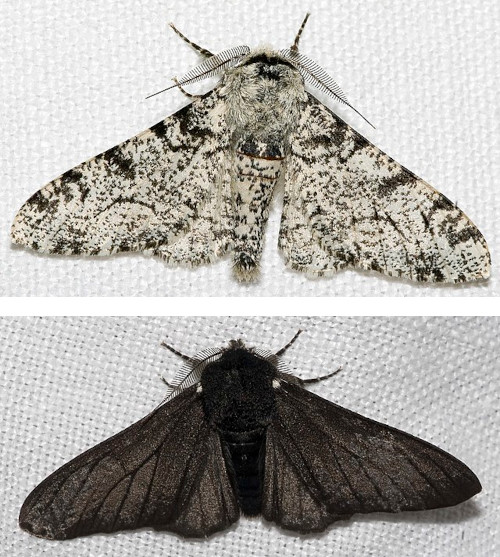
Here’s a striking sign of the pervasive influence of the Industrial Revolution: It darkened England’s moths. Before 1811, the peppered moth, Biston betularia, had a white body. But as soot darkened trees, lighter-bodied insects became more visible to birds and other predators. By 1848 the frequency of dark-bodied moths in industrial regions had increased dramatically, one of the first documented instances of Darwin’s principle of natural selection. American geneticist Sewall Wright called it “the clearest case in which a conspicuous evolutionary process has actually been observed.”
Somewhat related: A curious wartime observation by Gertrude Stein, in Alsace, from The Autobiography of Alice B. Toklas:
Another thing that interested us enormously was how different the camouflage of the french looked from the camouflage of the germans, and then once we came across some very neat camouflage and it was american. The idea was the same but as after all it was different nationalities who did it the difference was inevitable. The colour schemes were different, the designs were different, the way of placing them was different, it made plain the whole theory of art and its inevitability.
